
The regions Sacred Heart School offers busing from are:
Additional notes: Sacred Heart offers its students 3 shared bus services, in conjunction with other QAIS (Quebec Association of Independent Schools) private high schools, in the West Island / Ville St-Laurent, Laval / TMR and South Shore.
How we see The Sacred Heart School of Montreal
Compare with:
How The Sacred Heart School of Montreal sees itself
"Since 1861, we have been dedicated to graduating confident and brave women, full of potential and prepared to take on the world. The school is committed to developing young women of intellect, conviction, compassion and with a sense of justice for all; leading to the MEES Secondary-School Diploma. An all-girls grade 12 program, and boarding, are also available. In a constantly evolving world, choose Sacred Heart to accompany and encourage your daughter on this journey of personal and developmental growth."
"Sacred Heart encourages its students to thrive academically as well as socially, and to strive for greatness, all of which are part of Sacred Heart’s fundamentals and core values. The school teaches its students to feel empowered and brave enough to take on a world that will challenge them in many different ways over the course of a lifetime, but also feel safe enough to rely on their Sacred Heart community for support and encouragement.
Sacred Heart creates a space for students to cultivate a deep sense of empathy and compassion and learn the importance of giving back and making a positive impact on the world around them. Encouraged to embrace diversity and inclusivity, they develop the skills to navigate and appreciate the complexities of our interconnected global society. This holistic approach to education equips students with the tools they need to not only succeed in their personal and professional endeavors but also to become responsible and empathetic citizens of the world."
"In adapting to the evolving needs of the student body, Sacred Heart transformed its approach to education and faith. While its roots may have been deeply Catholic, the institution recognized the importance of embracing diversity and fostering inclusion among its students. While Catholic values remain a part of the school's ethos, there has been a shift towards prioritizing faith in a broader sense. This shift reflects a recognition that in today's world, fostering understanding, empathy, and respect for all individuals regardless of their religious affiliation or background is paramount. By promoting a culture of inclusivity and openness, Sacred Heart empowers its students to navigate the complexities of the modern world with compassion, empathy, and a deep sense of faith in themselves and in humanity as a whole. In this way, Sacred Heart remains rooted in its Catholic heritage while also embracing a broader vision of faith that values diversity and inclusion as central tenets."
"Since its inauguration in 1861, Sacred Heart opened its doors to any girl, regardless of circumstance, who desired a Sacred Heart education. One of its major differentiators is that Sacred Heart has an extremely rich history with many significant traditions and milestones, but one of the most significant moments has recently taken place when the school announced it is becoming fully independent of government subsidies effective September 2024. This change has been planned for several years, and the decision is the result of a thorough and thoughtful decision making process that was guided by the best interest of our Sacred Heart community. With this change, Sacred Heart will be able to stand by its dedication to welcome more young women, both domestic and international, seeking a Sacred Heart education without the need for an English Language Education Eligibility certificate. This is an inspiring new chapter in Sacred Heart’s history."
"A Sacred Heart student embodies a genuine enthusiasm for learning and approaches their studies with curiosity and dedication, eager to explore new ideas and values teamwork. Empathy and supportiveness are also essential qualities, as everyone at Sacred Heart, faculty and staff included, demonstrate compassion and kindness towards others, fostering a positive and inclusive atmosphere. Respect for others and effective communication skills are important for meaningful interactions, while adaptability and flexibility enable students to thrive in an environment that offers personalized instruction and learning experiences. Ultimately, the Sacred Heart student has a strong desire for personal growth, embracing challenges as opportunities for learning and self-improvement within the nurturing environment of an all-girls high school."
"If a student is seeking a large high school experience characterized by a bustling campus, the close-knit environment of Sacred Heart may not be the ideal fit. Due to its smaller size, the school offers a more intimate and unified community where students and faculty often have closer relationships. This can foster a sense of belonging and support, as students may feel more connected to their peers and have more personalized interactions with teachers and staff. For students who thrive in larger environments, the personal atmosphere Sacred Heart may feel constraining or lacking in opportunities for growth and exploration. Ultimately, the decision of whether Sacred Heart is the right environment for a student depends on their individual preferences, priorities, and goals for their high school experience. While some students may thrive in the intimate setting and supportive community of a smaller school, others may prefer the opportunities and diversity offered by a larger institution."
"Students at all-girls schools have higher aspirations and greater motivation than their female peers at coed schools because all-girls’ schools are specifically dedicated to the ways girls learn. Our dedicated, highly qualified faculty understand that girls learn differently than boys and all-girls’ schools are able to focus on girls’ unique learning styles. Our students are then inspired to become informed, engaged global citizens who lead with determination, competence, and empathy."
"The most prominent feature of The Sacred heart school of Montreal, as perceived by the public, is its rich history within Montreal’s fabric intertwined with the expansive nationwide Sacred Heart network. Our network not only provides a deep-rooted historical foundation but also offers unique student exchange opportunities, enriching the educational experience for students. Moreover, the school is widely recognized for its warm and caring environment, characterized by small class sizes that foster personalized attention and support. This reputation for nurturing students in a family-like community sets the school apart, making it a beacon of superiority in education renowned for its commitment to holistic development, individualized learning and academic excellence."
"Access to a worldwide Network of Sacred Heart Schools
Upon enrolment, your daughter becomes part of a worldwide network of sister schools which includes over 150 schools in 41 countries. This network allows us the unique opportunity to offer a diverse and far reaching student exchange program. Access to a worldwide network of sister schools opens up a multitude of enriching opportunities for your daughter's educational journey. Through student exchange programs, she can immerse herself in different cultures, languages, and perspectives, fostering a deeper understanding of the global community. These exchanges not only broaden her horizons but also cultivate lifelong friendships and invaluable cross-cultural communication skills. Additionally, the Sacred Heart network provides access to collaborative projects, joint academic initiatives, and shared resources, further enhancing the educational experience and preparing her to thrive in an interconnected world."
"The importance of our Sacred Heart Community
When joining Sacred Heart, you develop a common goal with the faculty, staff, parents and alumnae. That goal is to come together and encourage its students to follow their ambitions while supporting them each step of the way, because Sacred Heart is not just a school, at its core, it's a community."
"Its commitment to improvement of its infrastructure to optimize the educational landscape can be demonstrated by the recent opening of a state of the art Auditorium (2020) and Julia Cianci Wellness Centre (2022).
A well-designed auditorium provides a dedicated space for showcasing drama productions, musical performances, and other artistic endeavors. This not only allows students to showcase their talents but also encourages participation in extracurricular activities related to the performing arts, fostering creativity and self-expression.
The Julia Cianci Wellness Center cultivates the well-being of the students in addition to the staff and educators alike. This space offers an opportunity to participate, engage and communicate freely while putting one’s physical and mental health as a priority.
Investing in such facilities demonstrates Sacred Heart's dedication to providing students with access to high-quality resources and opportunities for growth and development."
"Sacred Heart’s commitment to excellence in education can be demonstrated through various goals that focus on enhancing student learning, fostering a positive learning environment, and promoting continuous improvement. The Leadership Team encourages and supports teachers in adopting innovative and effective teaching methods, such as project-based learning and technology integration. It provides PD opportunities for educators to stay current with best practices in teaching and learning. The school continually invests in technology infrastructure and resources to enhance the learning experience, including providing access to educational software and interactive learning tools. Facility enhancements which will further enhance teaching and learning are on the horizon."

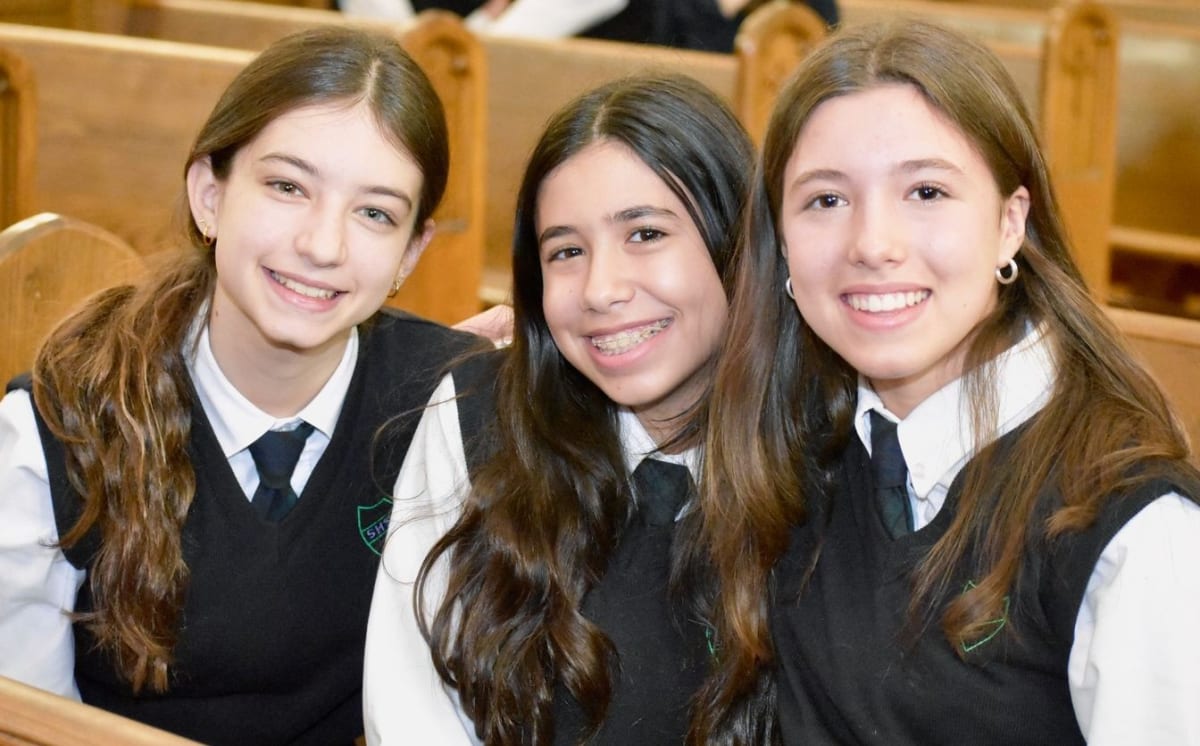
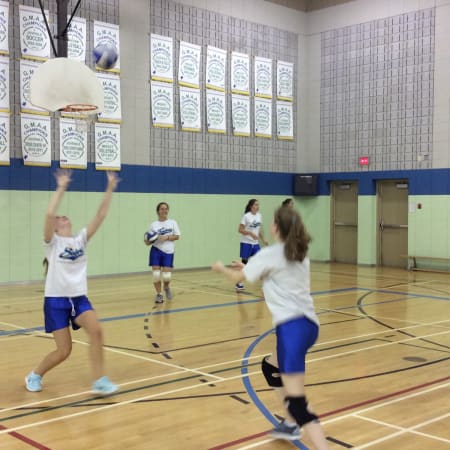
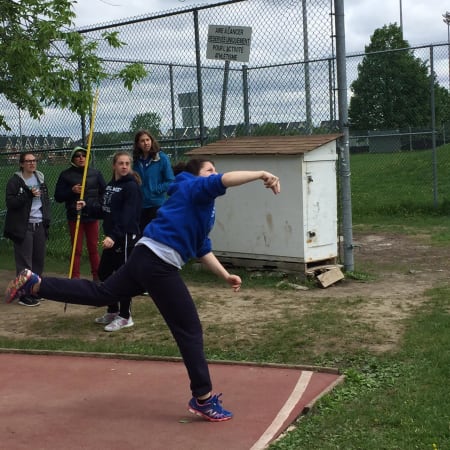
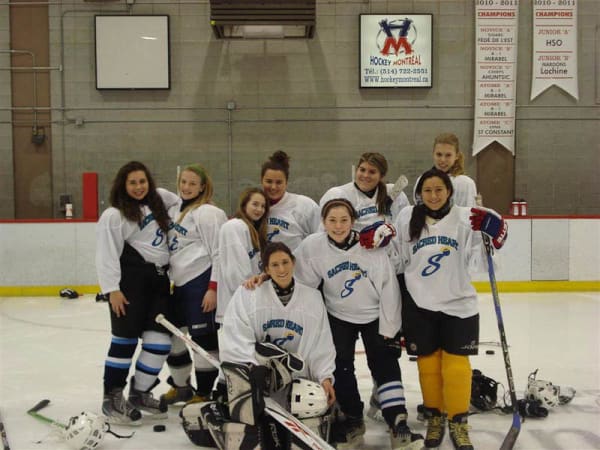




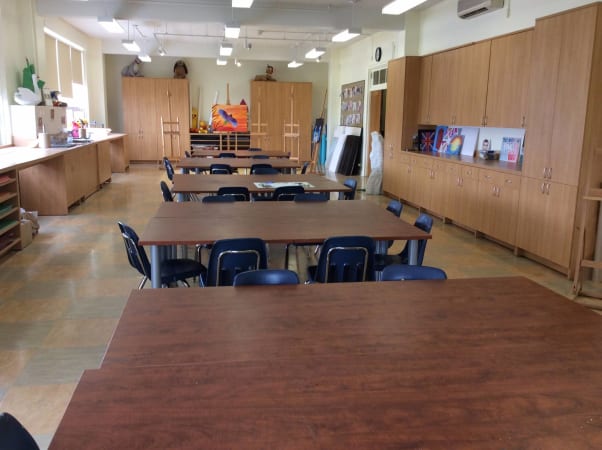




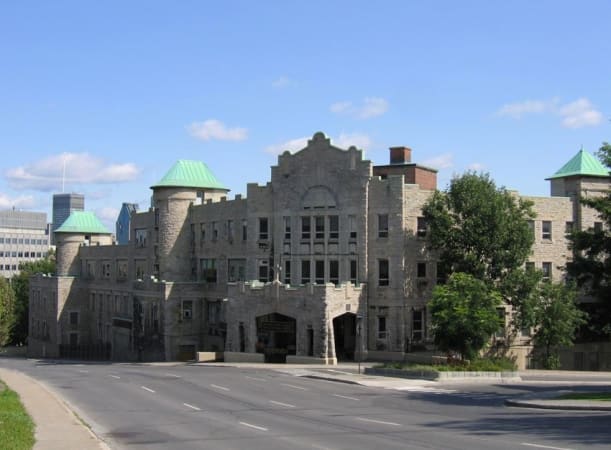

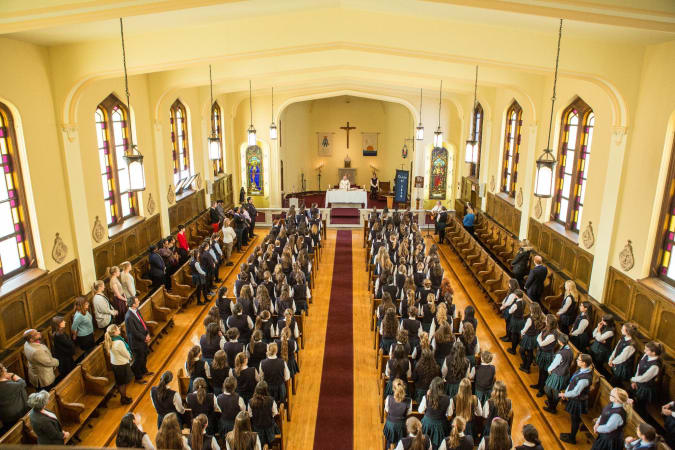



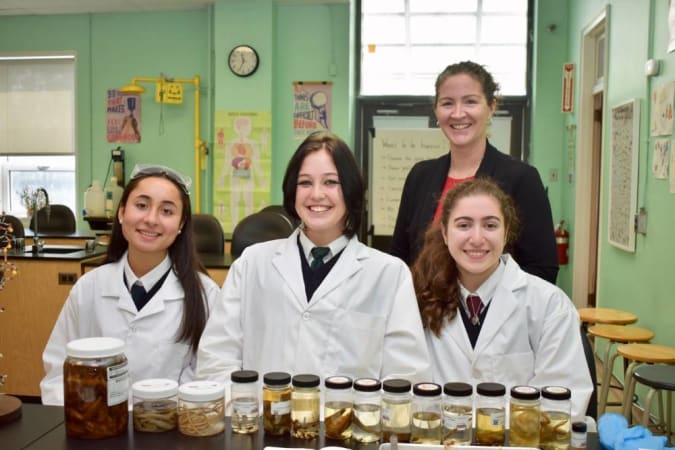





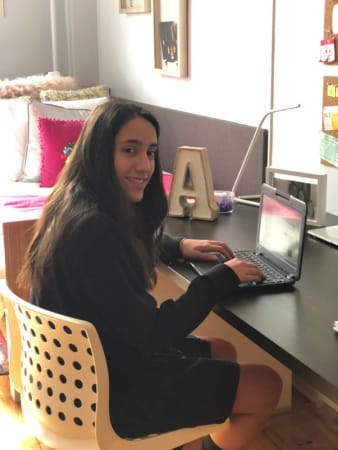
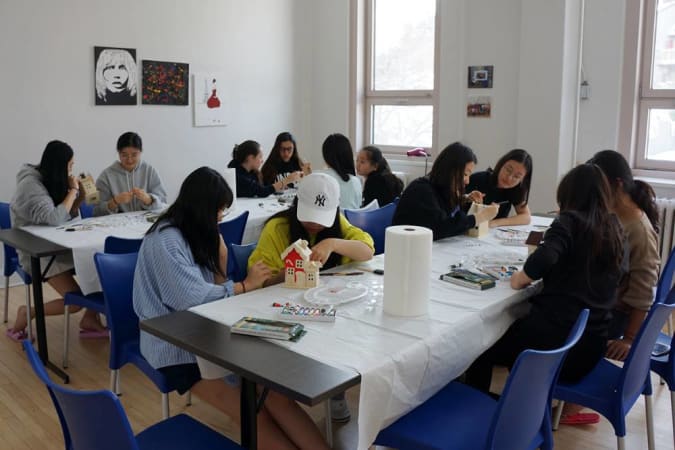













Heart of Steel gets a tune-up.











How people from the school’s community see The Sacred Heart School of Montreal
Top-down influence on the school’s direction and tone

Patricia Briand, Head of School
B.Ed., M.A.Ed.
At The Sacred Heart School of Montreal, we believe that girls possess incredible potential and are capable of achieving remarkable things. Since the inauguration in 1861, we have been dedicated to providing a nurturing and inclusive environment where students can flourish academically, grow personally, and develop the skills necessary to navigate an ever-changing world. Through innovative teaching methods and personalized attention, we foster a love for learning and equip our students with the tools they need to excel in college, careers, and beyond. We prioritize the social and emotional well-being of our students, providing a supportive environment where they can build resilience and a strong sense of self.
More than a School, a Community
Not only is The Sacred Heart of Montreal located in the heart of Montreal where we have been a part of the city's fabric for over 160 years, but we are privileged to be part of a larger Sacred Heart community. Our network consists of 150 schools across 41 countries and creates a sense of belonging while enabling growth. As a member of this worldwide network, we benefit from a wealth of resources, expertise, and collaborative partnerships that enhance our ability to deliver a transformative education. With this network also comes the opportunity for our students to visit one of their sister schools around the world. We believe that international experiences can greatly enrich one's education and personal growth, and we are committed to providing our students with the chance to broaden their horizons through cultural immersion and academic exploration.
As you explore our school, we hope you will gain a deeper understanding of the vibrant and enriching educational experience that awaits you at The Sacred Heart School of Montreal. We invite you to join our community of trailblazers, innovators, and change-makers, where young women are empowered to embrace their potential and shape a brighter future.
Our Mission
These are only some of the ways that we ensure that our learning environment encourages our students’ progress. As a Sacred Heart network school, our mission is to nurture the mind, body, and spirit of all our students; our five goals allow this mission to develop organically into in-school as well as extracurricular activities that push students to get involved in their communities, develop their social awareness, and seek personal and academic growth. All this and more ensures that all students leave Sacred Heart as well-rounded and accomplished young women.
Most big schools provide your extroverted child with plenty of social opportunities and the ability to interact with different peer groups with a wide range of personalities, interests, values, etc. A larger student population and more extracurriculars—including activities like team sports, arts programs, and debate—will give them a broader scope of opportunities to participate in events that scratch their interpersonal itch. “This may also give them the opportunity to hone certain skills,” say Ann and Karen Wolff of Wolff Educational Services. “For instance, they might run for student council to develop leadership and public speaking skills and learn to be a voice for other students.”
At a boarding school, your extroverted child will likely enjoy seeking out and interacting with peer groups from different backgrounds, away from home. In fact, studying and living with other kids for an extended period of time, as many alumni tell us, provides the unique opportunity to form close relationships that can last well beyond the school years. Many boarding schools also have large student populations and more extracurriculars—including activities like student council, team sports, and arts programs—which will give your outgoing child a broader scope of opportunities to feed off the energy of others, and possibly even become a leader, in a dynamic environment.
Keep in mind, though, “Being an extrovert can be a catalyst for getting involved in lots of activities, which can sometimes be hard to manage,” says Joanne Foster, Toronto-based education consultant and author of ABCs of Raising Smarter Kids. “For instance, a particularly extroverted child may try to end up juggling too many people and activities. While they still may thrive at a boarding school, it helps to know your child and how much social interaction they can handle comfortably.”
Make sure any prospective school, no matter what size, provides the right social environment to help your child feel at home, make friends, and develop confidence. This is especially important at big schools, which are sometimes more socially overwhelming and challenging for an introvert to find their bearings in. Of course, “Because larger schools usually have a more diverse student population, introverted kids are more likely to find a small group of people like them, a peer group they can relate to and find acceptance from,” says Dona Matthews, Toronto-based education consultant and co-author (with Joanne Foster) of Beyond Intelligence.
Bigger schools often have a broader scope of extracurricular activities, which is another way to help your child meet the right group of friends. “This may also give them the opportunity to develop certain skills,” say Ann and Karen Wolff of Wolff Educational Services. “For instance, they might run for student council to develop leadership and public speaking skills and learn to be a voice for other students. Remember, though, each child is different—so what works for one may not work for another.”
At a boarding school, your introverted child will be more motivated (and virtually compelled) to seek out and interact with different peer groups. Away from home and in a new environment, they’re more likely to take the initiative to form close friendships, which can boost their independence and confidence, and help them develop critical social skills.
"Consider, though, whether your child will be comfortable and confident while living away from home, and while having to navigate the various, and sometimes unforeseen social-emotional experiences, alongside the academic challenges,” says Joanne Foster, education expert and author of ABCs of Raising Smarter Kids. Finally, ensure support systems are in place to promote their social and emotional development, and that your child is willing and prepared to take advantage of them. Your child will often need to advocate for themselves at a boarding school, and they’ll need confidence and perseverance to do so.
THE OUR KIDS REPORT: The Sacred Heart School of Montreal
Next steps to continue your research:
Continue researching The Sacred Heart School of Montreal with OurKids.net, or visit school website.